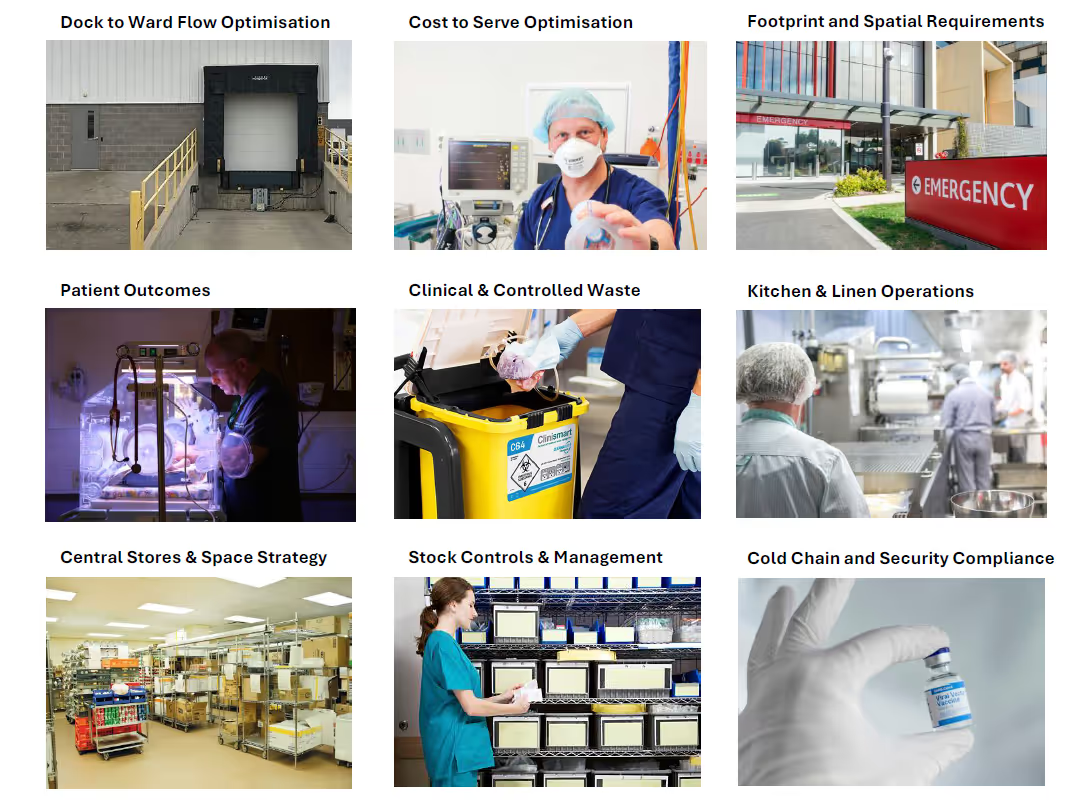Why BOH Design Matters for Stadiums
Sporting and event stadiums are designed to host thousands of spectators, deliver world-class fan experiences, and facilitate seamless event operations. While front-of-house areas like grandstands, hospitality zones, and VIP lounges receive much of the design attention, an equally critical yet often overlooked element is the back-of-house (BOH) design.
BOH areas—loading docks, catering and hospitality logistics, security control rooms, waste management, and staff movement zones—are the operational backbone of any stadium. Poorly planned BOH operations can lead to safety hazards, congestion, inefficiencies, rising service costs, and regulatory compliance issues.
For Asia-Pacific (APAC) cities investing in major stadium infrastructure ahead of global sporting events like the 2026 Commonwealth Games, 2027 Rugby World Cup, and 2032 Brisbane Olympics, ensuring BOH efficiency and risk mitigation from the Master Planning phase is essential.
This article explores why BOH design must be prioritised in stadium development and how it impacts safety, cost efficiency, and service quality.
1. Loading Docks & BOH Logistics: Avoiding Congestion & Delays
The Challenge: Bottlenecks & Delivery Delays
Stadiums are high-traffic environments, requiring constant deliveries and services to:
🏟 Stock food, beverages & merchandise
🚛 Transport event production equipment
🎭 Support large-scale concerts & sporting events
Common BOH challenges in stadiums include:
❌ Limited access for trucks & supplier vehicles → Causing severe congestion before events
❌ Inadequate dock scheduling systems → Leading to delivery delays and increased wait times
❌ Poorly placed loading docks → Forcing manual handling of goods across long distances
The Solution: Optimising BOH Logistics for Stadium Events
✔ Multi-bay loading docks → Supporting simultaneous deliveries & reducing congestion
✔ Dock appointment systems → Allowing timed access for supplier vehicles
✔ Direct access from loading docks to hospitality zones → Minimising manual handling
✔ Clear separation of vehicle & pedestrian movement → Ensuring safety & efficiency
Strategic BOH logistics planning enables faster turnover, reduced traffic bottlenecks, and safer event operations.
2. Hospitality & Catering: Ensuring Cost-Effective & Compliant Service
The Challenge: Meeting Food & Beverage Demands Efficiently
Stadiums must serve tens of thousands of patrons in a short timeframe, creating immense pressure on food service logistics. Poor BOH design can result in:
❌ Stock shortages & delayed replenishments → Leading to lost revenue
❌ Overcrowded kitchens & prep areas → Reducing service speed & food safety compliance
❌ HACCP violations → Due to improper separation of raw, cooked, and waste areas
The Solution: BOH Design for High-Volume Catering Operations
✔ High-capacity cold & dry storage near F&B outlets → Ensures fast stock replenishment
✔ Dedicated staff-only service corridors → Avoids congestion in guest areas
✔ Automated stock tracking systems → Reduces waste & prevents out-of-stock situations
✔ Well-ventilated kitchens & centralised food prep zones → Supporting HACCP compliance
By integrating BOH catering workflows into stadium design, operators can cut costs, increase service efficiency, and maintain strict food safety standards.
3. Security & Emergency Response: Managing Risks in High-Capacity Events
The Challenge: Balancing Fan Safety & Operational Control
Stadiums require robust security and emergency response planning, but inadequate BOH design can lead to:
⚠ Delays in emergency response times due to poor staff movement routes
⚠ Insufficient security checkpoints & command centres
⚠ Crowd congestion risks from poor vehicle & pedestrian segregation
The Solution: Secure & Efficient BOH Planning
✔ Dedicated security command centres → With visibility over all BOH & FOH areas
✔ Restricted-access BOH zones → Preventing unauthorised personnel from high-risk areas
✔ Strategically placed first aid & emergency access points → Enabling rapid response to incidents
✔ Integrated CCTV & access control systems → Enhancing stadium security operations
By considering BOH security and emergency access early, stadiums can create safer environments for fans, staff, and performers.
4. Waste & Sustainability: Future-Proofing BOH for Green Stadiums
The Challenge: Managing Large-Scale Event Waste Efficiently
Stadiums generate huge volumes of waste, including:
🗑 Food & beverage packaging
♻ Recyclables & general waste
🚮 Hazardous waste from maintenance & cleaning operations
Poor BOH waste handling leads to:
❌ Overflowing bins & odour issues in public areas
❌ Delays in post-event clean-ups → Increasing operational costs
❌ Regulatory fines for improper waste segregation
The Solution: Smart BOH Waste Management
✔ Pneumatic waste disposal systems → Reducing manual waste handling
✔ Designated recycling zones → Aligning with sustainability targets
✔ Compostable packaging & reusable cup systems → Reducing landfill impact
✔ Automated waste tracking & collection schedules → Improving efficiency
Sustainable BOH design can reduce waste management costs by 20-30%, improve stadium hygiene, and enhance sustainability credentials.
5. Workforce & Operational Efficiency: Optimising Staff Movement & Service
The Challenge: Inefficient BOH Staff & Service Flows
Stadiums employ hundreds to thousands of staff per event, and poor BOH layouts can cause:
❌ Staff congestion in service corridors
❌ Difficult access to storage & equipment rooms
❌ Long distances between BOH & FOH areas → Delaying service
The Solution: BOH Design for Efficient Stadium Staffing
✔ Staff-only access routes & elevators → Ensuring smooth movement
✔ Well-placed break rooms & storage areas → Reducing fatigue & inefficiencies
✔ Digital workforce scheduling & task tracking → Improving staff productivity
By optimising BOH design for operational efficiency, stadiums can reduce staffing costs and improve service delivery.
The Future of BOH Design in Stadium Planning
For APAC stadium developments, BOH efficiency is just as critical as front-of-house design. Without proper BOH planning, stadiums face long-term operational inefficiencies, safety risks, and higher service costs.
Key Takeaways for Stadium Developers & Operators:
✅ Smart BOH logistics & loading dock design → Reducing congestion & improving service flow
✅ Cost-effective F&B & catering logistics → Ensuring stock availability & HACCP compliance
✅ Robust security & emergency planning → Creating a safer venue for fans & staff
✅ Sustainable BOH waste management → Cutting costs & aligning with green initiatives
✅ Optimised BOH workforce flows → Enhancing staff productivity & operational efficiency
Neglecting BOH design in stadium master planning leads to bottlenecks, inefficiencies, and rising operational costs. Forward-thinking stadium developers must prioritise BOH optimisation to ensure seamless event execution and long-term operational success.
Is your stadium project designing for BOH efficiency?





